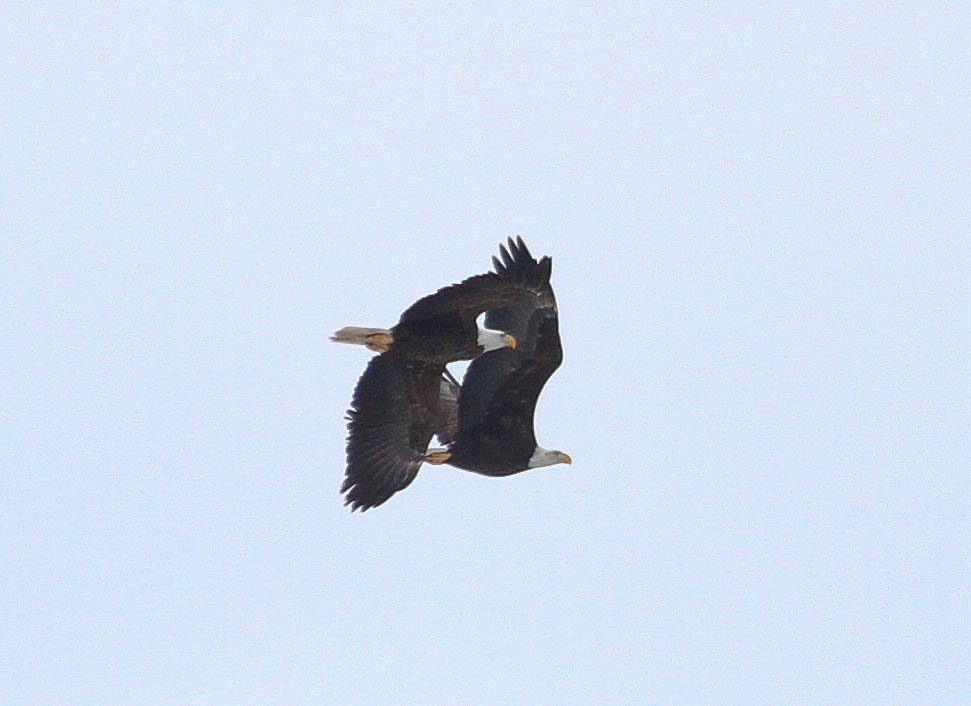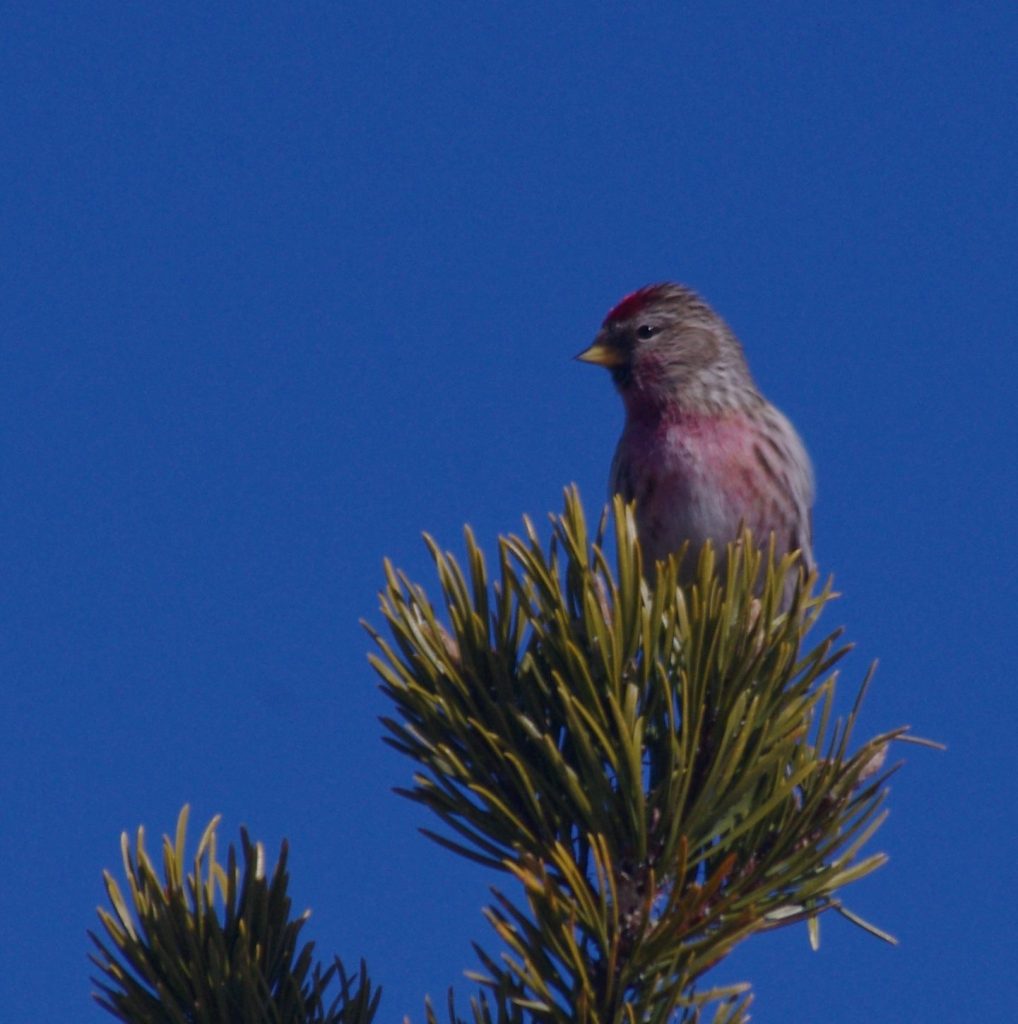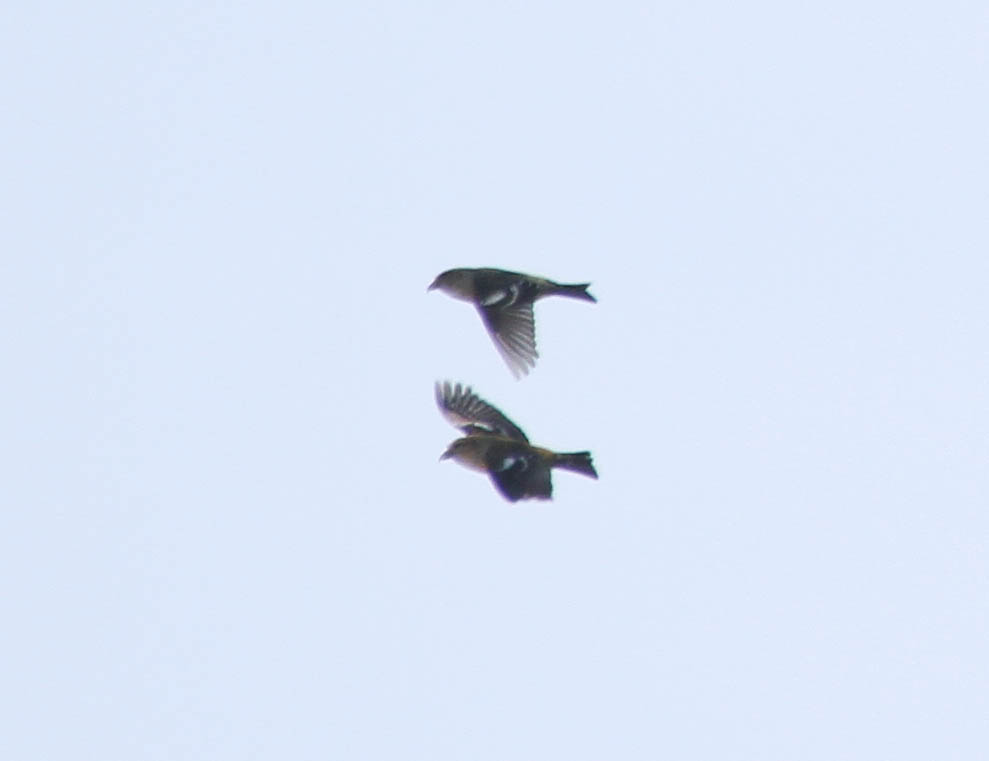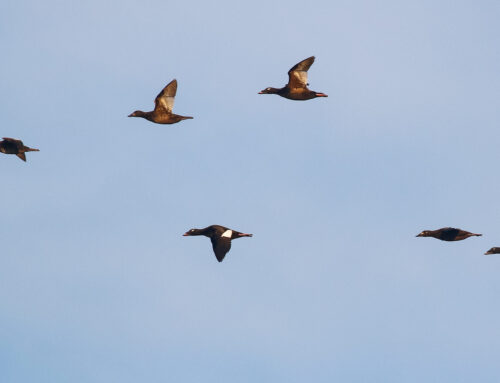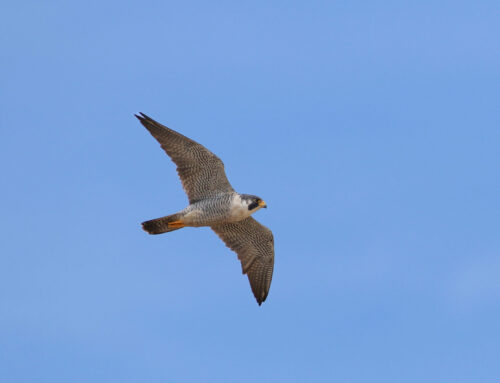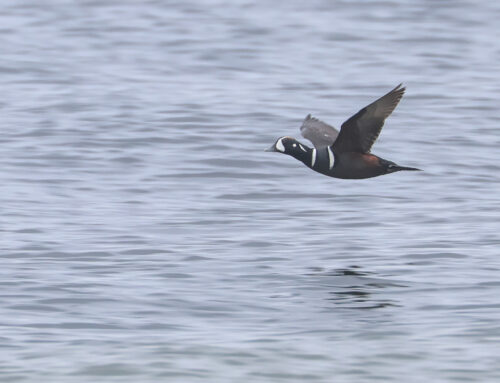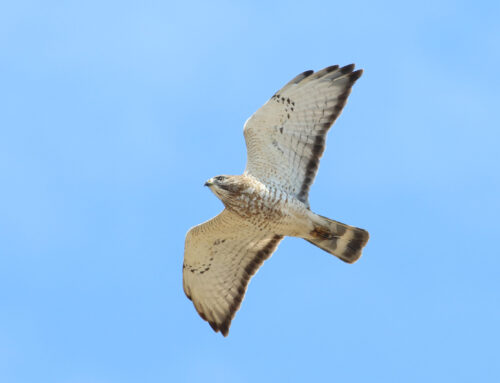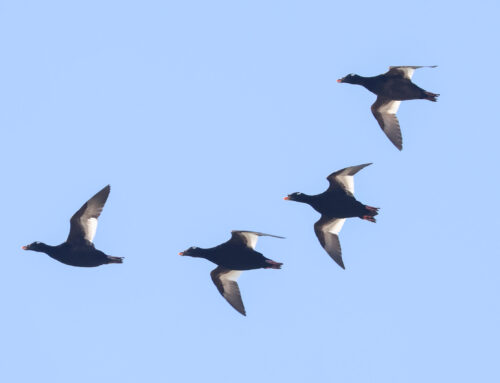By Gary Palmer, 2018 Hawk Counter
Bald Eagles, Photo Skye Haas
Migration seems to be on pause here at Whitefish Point, as March ended with a sizeable snowstorm accompanied by fierce north winds to continue a string of slow days. The month ended with a total of seven species of raptors and 206 individuals since the start of the count on March 15. Bald Eagles remain by far the most common raptor with a total of 110. Second-most common is Red-tailed Hawk at 32 birds, but interestingly both Northern Goshawk and Golden Eagle are just behind that mark, at 29 and 27 individuals, respectively. The other raptors tallied for March were three Red-shouldered Hawks, two American Kestrels, and a lone Turkey Vulture.
Once our next wave of migrants arrives, Red-tails are sure to jump far ahead of the competition. In a typical season at Whitefish Point Red-tail numbers are usually third place behind only Sharp-shinned and Broad-winged Hawks. These Buteos will soon join together in humongous kettles numbering hundreds of birds taking advantage of the same rising air currents, with their single-day high count all but certain to far surpass the entire season’s total of either Goshawk or Golden Eagle.
The total of just seven raptor species this March is below average. Ten is typical, and last season I reached a total of 11. Out of 35 previous years of March counting here at the Point, only two have had fewer raptor species than this year. Northern Harrier, Sharp-shinned Hawk, Rough-legged Hawk, and Merlin are all frequently recorded here in March but have yet to appear on the count this season.
The number of individuals is also low. The March 2018 total of 206 raptors counted is below the average of all years of 253, and far from the mean over the preceding 10 years of 310 birds. Of the seven species tallied, only two have been seen in numbers surpassing the 10-year average: Northern Goshawk (29 vs. 12.8) and Golden Eagle (27 vs. 26.3).
Common Redpoll, Photo Gary Palmer
In my non-raptor data there have been a number of interesting differences from last year. The most surprising change has been this year’s unforeseen exodus of finches. Last year I counted a total of 3,798 birds in the month of March; this season’s Common Redpoll total alone blew that away, with 5,023 individuals! Even more unexpected though was the stunning number of White-winged Crossbills. An incredible 1,653 have been recorded, compared to the 2017 total of only 98 over the entire season. All of the White-winged Crossbills have flown by between March 16 and March 26, with a high of 420 on March 20.
White-winged Crossbills, Photo Skye Haas
Numbers of some common species such as Black-capped Chickadee, Common Raven, and American Crow are only around 50% of last year’s total, and strangely, I have not recorded a single Red-breasted Nuthatch yet this season, after seeing them on all but two days last year. Last year’s total for Pine Siskin was far higher than this season’s (190 vs. 9), as was the case for Pine Grosbeak (268 vs. 85). Though a number of species from March 2017 were missed this year, only Mourning Dove and Dark-eyed Junco were recorded so far in 2018 but not in March of last year.

